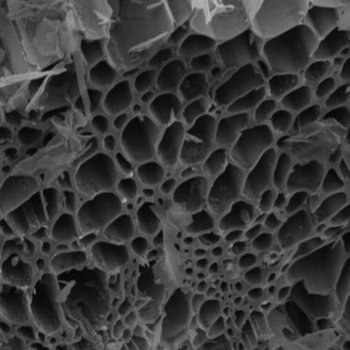Probio carbon: a carbon sequester and plant growth promoter?

Dr Karen O’Hanlon of probio carbon Ltd explains the environmental and plant growth promotion benefits of probio carbon, a biochar feed.
29 January 2020
Biochar is a carbonaceous product obtained by the pyrolysis – a process which uses high temperatures to break down biomass or waste in an oxygen-free environment – of organic materials.
Origins
The interest and use of biochar is inspired by terra preta de indio (Amazonian black earths) from the pre-Columbian civilization times, which were characterised by a remarkable soil fertility.
Importantly, from a climate perspective, biochar is very persistent in the environment, and so its application to soils can remove carbon dioxide from the atmosphere for long periods of time. Thus, there are exciting possibilities in using biochar to mitigate climate change by carbon sequestration or waste management.
Key benefits of probio carbon – enriched carbon feed (biochar)
A further enhancement to biochar is possible due to its large surface area which acts as a natural environment for beneficial bacteria and fungi. The inclusion of plant growth promoting bacteria (PGPB), most notably the spore former Bacillus subtilis, has the following additional benefits:
- It sequesters carbon from the atmosphere.
- It promotes plant growth.
- It modulates plant growth hormone levels.
- It produces siderophores, which make iron available to the plant.
- It increases systemic resistance to disease (including Fusarium, Rhizoctonia, Phythium, Botrytis, and many more pathogens).
- It increases the uptake of minerals into the plant.
- It reduces nitrate leaching through nitrate and phosphate capture.
- It absorbs contaminants, such as arsenic and copper from soils.
Nitrogen fixing organisms such as Azotobacter and Rhizobia produce bio-available nitrogen for plants. The sponge like characteristics of biochar work in tandem with these organisms by helping to trap the nitrites and nitrates in the soil.
This results in less run-off and the improved retention assists the nitrification and de-nitrification processes. The symbiosis between plant-fungi-bacteria within the environs of the biochar ultimately leads to a reduction in the requirements for pesticide and fertiliser usage for growers.
Future uses of probio carbon – enriched carbon feed (biochar)
Horticulture in temperate climate zones is energy intensive and the use of peat as the main ingredient in substrates releases additional greenhouse gas emissions during mining and processing.
Increasingly restrictive legislation and wetland ecosystem destruction, through its extraction, will limit peat use.
Presently, in order to attain sustainability in potted plant production, producers are opting for peat alternatives, such as biochar, that provide good performance, are readily available, inexpensive, and environmentally friendly.
Lab-scale data on biochar carbon recalcitrance compared to peat indicate that spent biochar-based substrates in soil are a highly effective carbon storage tool (approximately 80% versus 40% respectively).
The combination of bio-energy replacing fossil energy, biochar replacing peat in substrate, and long term storage of the spent biochar in soil, all contribute substantially to greenhouse gas reductions.
For more, see priobiocarbon.ie.



 Print
Print










Fans 0
Followers